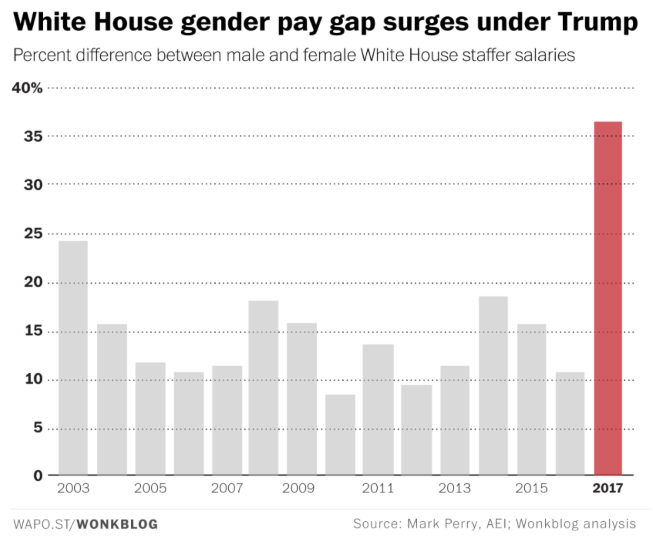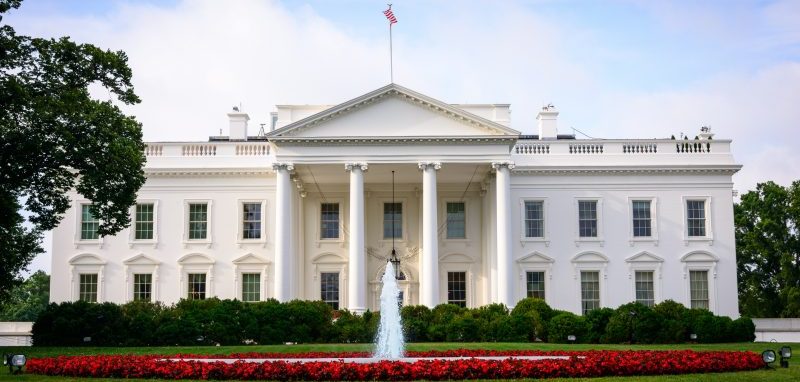Changes in federal government keep coming fast. That’s why GovLoop gives you these monthly recaps of federal news that may affect agency management and employment. If you’ve fallen behind, check out the previous recaps.
By the time you read this, there will undoubtedly be new developments. And, this roundup can’t include everything. The focus is on federal news most relevant to government employees. Check out the linked sources for more information.
Finally and importantly, this is not an opinion about or endorsement of any policies, regulations, or orders, nor of the behaviors of elected officials, political appointees, government employees, other individuals, organizations, or agencies.
1. Chaos? What chaos? Oh, you mean THAT chaos.
Though Trump claims there’s no chaos in the administration, a flurry of staffing shakeups hint at a White House on shaky legs. Here’s a set of remarkably interconnected web of hirings and firings. And yes, all this and more happened in just the last two weeks of July.
Trump hired financier Anthony Scaramucci as White House communications director. Later the same day, press secretary Sean Spicer resigned, with Sarah Huckabee Sanders taking his place. Spicer lasted only six months. Though Spicer had been said to be looking to leave for a while, he finally quit because he believed “Scaramucci’s hiring would add to the confusion and uncertainty already engulfing the White House.”
Spicer was right. Scaramucci quickly went on an epic profanity-filled tirade against chief of staff Reince Priebus and chief strategist Steve Bannon. Scaramucci also told radio host Hugh Hewitt that Hewitt was “probably right” to think that Trump would fire Attorney General Jeff Sessions. Scaramucci also threatened to fire the White House’s entire communications team, starting with assistant press secretary Michael C. Short. Rather than wait for the axe, Short resigned.
Meanwhile, Reince Priebus’ tenure as White House chief of staff ended after he’d spent just six months on the job. Though some reports said Priebus was fired or forced out, Priebus said he resigned. Trump replaced Priebus with retired General John Kelly, who had been serving as secretary of Homeland Security. Elaine Duke, the deputy director of Homeland Security, will step up as acting secretary.
Hours after Kelly was sworn in as chief of staff and just 10 days after Scaramucci joined the White House, Trump removed Scaramucci as a result of Kelly’s urging. There’s no word yet if Scaramucci will stay on at the White House in a different role and the new communications director will be. And, it’s too early to know if this is a sign that John Kelly will bring order to chaos.
2. No really. Chaos.
Those aren’t the only notable or controversial staffing changes in the last month.
Walter Shaub, Jr. resigned as director of the Office of Government Ethics in July. As Shaub departed, he told the New York Times that the U.S. is “close to a laughingstock” because of the “historic ethics crisis” created by the Trump administration. Since his departure, Shaub has continued to speak against government abuses of power.
The National Security Council (NSC) seems to be in tumult. Tera Dahl, deputy chief of staff at the NSC, important ally to Steve Bannon, and former Breitbart columnist, was “reassigned” off the NSC and out of the White House. Dahl’s departure was characterized as a “blow for the nationalist wing of the [White House].” National Security Advisor Derek H.R. McMaster fired Derek Harvey from the NSC, another person close to Bannon. Harvey was a key policy adviser on the Middle East.
Speculation abounds about who will be next to go. Will Trump fire special counsel Robert Mueller and risk a constitutional crisis? Will Jeff Sessions break because of Trump’s criticisms? Will Bannon get the boot? Will Rex Tillerson stay on as head of the State Department? Will Trump turn his threatening “joke” about firing HHS Secretary Tom Price into reality? Stay tuned.
3. Not many new faces
With the Senate possibly (it’s really not clear) taking off for summer recess in August, The Washington Post reported Trump has fewer confirmed political appointees than previous administrations did by this point. Though Trump’s slow pace of nominations was initially the cause of the slow pace of confirmations, the Post explained that “as nominations have come more quickly, the confirmations have not kept pace.”
That said, it doesn’t help Trump when one of his nominees has to remove themselves from consideration. In July, James Clinger withdrew his nomination as chairman of the Federal Deposit Insurance Corporation (FDIC), citing family-related obligations.
Also in July, the Senate confirmed Patrick Shanahan, the former vice president of Boeing, as deputy secretary of Defense; Neomi Rao as the head of the Office of Information and Regulatory Affairs; David Bernhardt as deputy secretary of the Interior despite controversy over whether he violated the Lobbying Disclosure Act; and businessman William Hagerty as ambassador to Japan.
Trump has continued to make nominations. His nomination of Samuel Clovis to the U.S. Department of Agriculture (USDA)’s top science position was especially controversial since Clovis is a former talk show host who is not a scientist, has no agricultural experience, and is a climate change denier.
Trump also shuffled his legal team that’s responding to the Russian investigation. As part of this move, Trump hired attorney Ty Cobb as “special counsel” on issues related to the Russian investigation. CBS News explained that Cobb “will work inside the White House…that means he is a taxpayer-funded hire.”
4. Just a few more White House employment woes
An analysis by an economist at the conservative think tank, the American Enterprise Institute, shows “the pay gap between male and female White House staffers has more than tripled” under the Trump administration, as reported by The Washington Post. The Trump administration’s gender pay gap is more than double the national pay gap, and is also “up sharply” from the Obama administration’s pay gap.

While the White House struggles to manage staffing, hiring is picking up elsewhere in Trump world. The Hill reported that three days after Homeland Security raised the cap on H-2B visas for foreign guest workers, Trump businesses Mar-a-Lago and Trump National Golf Club filed requests to hire at least 76 foreign workers for low-wage jobs despite Trump’s “Buy American, Hire American” agenda.
5. Health care repeal fails
With a thumbs-down gesture that caused gasps in the Senate chamber, Senator John McCain (R-Arizona) joined Senators Lisa Murkowski (R-Alaska) and Susan Collins (R-Maine), and all 48 Senate Democrats in rejecting the Senate GOP leadership’s “skinny repeal” attempt to repeal parts of the Affordable Care Act a.k.a. Obamacare without providing a replacement.
CLIP: @SenJohnMcCain votes NO on #SkinnyRepeal. (1:29am ET) https://t.co/YiRu4COfHp pic.twitter.com/3Xgd9oXR9x
— CSPAN (@cspan) July 28, 2017
Though blame was hurled in every direction after the rushed 1:30 a.m. Senate vote, the defeat is considered a significant setback for Trump’s health care agenda.
According to a Reuters/Ipsos poll, a majority of Americans want the country’s leaders to move on from healthcare reform and turn attention to other priorities. Whether Republicans and the Trump administration listen to the needs of Americans remains to be seen.
What other federal government developments have caught your attention? What stories are you and your colleagues talking about at the office? Share your thoughts in the comments.
Lauren Girardin is a marketing and communications consultant, writer, and speaker based in San Francisco. She helps organizations engage their communities and tell their stories. Her website is laurengirardin.com and you can connect with her on Twitter at @girardinl.





Leave a Reply
You must be logged in to post a comment.